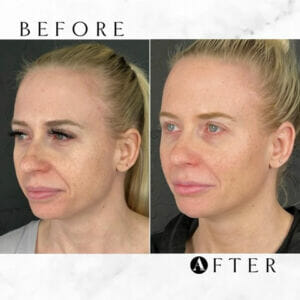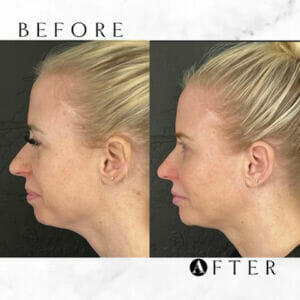In recent years, the use of dermal fillers has become increasingly popular as a non-surgical solution to address various aesthetic concerns. While these injectable treatments can provide remarkable results, one potential complication that can arise is filler migration. Filler migration refers to the movement of the injected filler material from the intended treatment area to an unintended location. As a result, it has become essential to understand this phenomenon and be aware of the importance of dissolving fillers when necessary.
Dangerous new trend: At-home Botox and filler treatments
Why Dissolving Fillers is Becoming More Common
The increasing demand for dermal fillers has led to a rise in inexperienced injectors performing these procedures. Without proper training and expertise, the risk of filler migration can significantly increase. Additionally, some individuals may not be satisfied with the results or may experience undesirable side effects. Dissolving fillers has become more common to rectify these issues and restore a natural appearance.


Understanding Filler Migration
Filler migration can occur due to various factors, such as improper placement or incorrect technique, the use of inappropriate filler types, or using too much product in one treatment session. Additionally, the natural aging process, changes in facial volume, and individual anatomy can contribute to filler migration. It is crucial to consult with a qualified injector who possesses a deep understanding of facial anatomy and has expertise in using fillers to minimize the risk of migration.
Choosing a Qualified Injector

Selecting a qualified and experienced injector is paramount in managing filler migration. It is recommended to seek out healthcare professionals, such as Certified Aesthetic Nurse Specialists, dermatologists or plastic surgeons, who have received specialized training in injectable procedures. They possess the knowledge and skill set required to evaluate your unique facial structure, select appropriate filler products, and perform precise injections to minimize the risk of migration.
Managing Filler Migration
If filler migration does occur, it is essential to consult with a healthcare professional to explore options for dissolving the filler. Hyaluronidase, an enzyme that breaks down hyaluronic acid fillers, is commonly used for this purpose. A qualified injector can administer hyaluronidase to dissolve the migrated filler and restore a more balanced and natural appearance. It is important to note that dissolving fillers requires expertise to ensure safe and effective results and may require multiple treatment sessions to achieve desired results.
As the popularity of dermal fillers continues to grow, it is crucial to be aware of the potential complications, such as filler migration. Choosing a qualified injector and understanding the process of dissolving fillers are essential steps to manage and correct any undesirable outcomes. By prioritizing safety, communication, and proper aftercare, individuals can enjoy the benefits of fillers while minimizing the risks associated with migration. Remember, your appearance is in your hands, and making informed decisions will lead to the best possible outcomes. Please visit us online at https://aestheticiqclinic.com/ to schedule a free consultation.
Author: Marissa Abdo, MS, RN, CANS is the founder of Scottsdale-based Aesthetic IQ Clinic. Abdo is a former team member of Dr. 90210 in Beverly Hills and a top national trainer with over a decade of experience. As a national trainer for the top aesthetic companies, Allergan and Galderma, she focuses on the anatomy of her client’s facial structures to enhance their overall beauty and specializes in facial injectable treatments that include Botox, Dysport, Juvederm and Restylane dermal fillers, and Sculptra Aesthetic. For more information, visit https://aestheticiqclinic.com.




